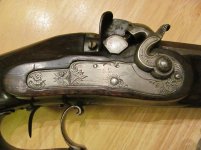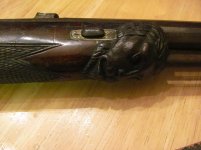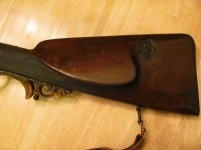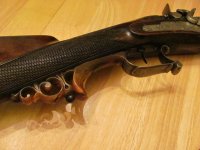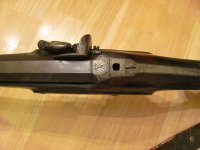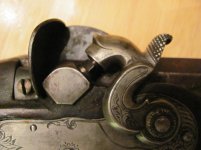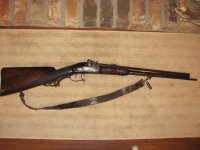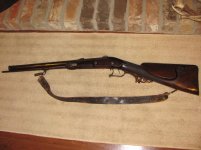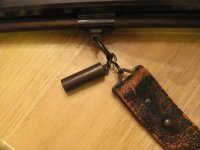It has the lines and style that is Germanic. While the barrel might have been cut down from the appearance of it, it may also have been made that way. Not unlike the shorter barreled Jaeger rifles of the flint period. The shorter barrel may have been because it was used on a coach.
Left handed locks utilized in this manner is not all that uncommon. Through the years, I've seen a number of guns made in this manner - both antique and custom built. I remember seeing a nice saw handle target pistol made this way many years ago at Friendship.
I would be interested in knowing the caliber of it.
I've owned several S X S German shotguns with much the same styling. I traded the last one off to a very knowledgeable collector/dealer who specialized in ML shotguns. In looking it over, he explained that the shotgun I had was an "apprentice gun" and he was even able to identify the shop it came from in spite of it being unmarked with the exception of proofs on the barrel. It really was a beautiful piece with intricate carving and engraving but it had steel furniture instead of brass or german silver.
It's basically supposition on the part of all of us. You really need to find out just exactly what it is by talking with someone who is knowledgeable on German style arms. As suggested, post it on the links that were given and you should run across someone who can tell you exactly what it is.
You also have to remembeer that there were a lot of "G.I. bringbacks" from Germany after the war. In the mid 1960s, a mutual friend put me together with another collector who wanted to show me his prize rifle. I had to put cotton gloves on before he would let me handle it. It was a muzzleloading German rifle - highly engraved, carved and with gold and silver inlays that he had acquired for his collection. It was a GI bringback - his story was that 5 GIs brought back parts of it and it was reassembled in this country after the war. it was truly a work of art and at that time, 1960s, he told me that he had it insured for $25,000.00 and I have no doubt he did.
I'm not saying that your rifle is in that category, but, a lot of historical firearms were "liberated" during the war and found their way to our shores. It's worth checking out the history of the piece from your family and the firearm itself. I hope you keep it in your family and enjoy it.

